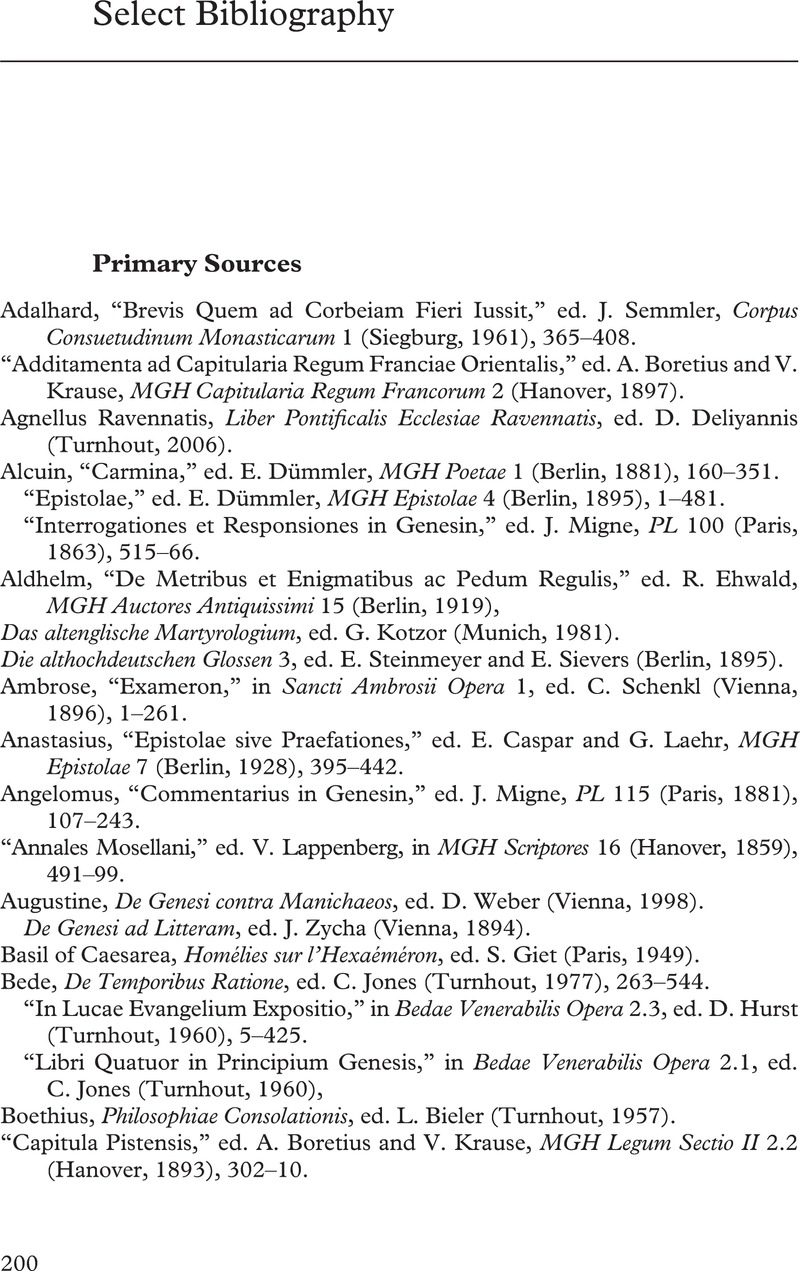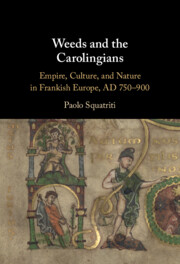Book contents
- Weeds and the Carolingians
- Weeds and the Carolingians
- Copyright page
- Dedication
- Contents
- Figures
- Preface
- Abbreviations
- Introduction
- 1 Weeds, Nature, and Empire
- 2 Weeds on the Ground
- 3 The Time of Weeds
- 4 The Worst of Weeds
- 5 The Botany of Paradise in Carolingian Rome
- 6 The Uses of Weeds
- 7 The Politics of Weeding in the Carolingian Empire
- Epilogue: Sorting Weeds Out
- Select Bibliography
- Index
- References
Select Bibliography
Published online by Cambridge University Press: 02 June 2022
- Weeds and the Carolingians
- Weeds and the Carolingians
- Copyright page
- Dedication
- Contents
- Figures
- Preface
- Abbreviations
- Introduction
- 1 Weeds, Nature, and Empire
- 2 Weeds on the Ground
- 3 The Time of Weeds
- 4 The Worst of Weeds
- 5 The Botany of Paradise in Carolingian Rome
- 6 The Uses of Weeds
- 7 The Politics of Weeding in the Carolingian Empire
- Epilogue: Sorting Weeds Out
- Select Bibliography
- Index
- References
Summary

- Type
- Chapter
- Information
- Weeds and the CarolingiansEmpire, Culture, and Nature in Frankish Europe, AD 750–900, pp. 200 - 219Publisher: Cambridge University PressPrint publication year: 2022



